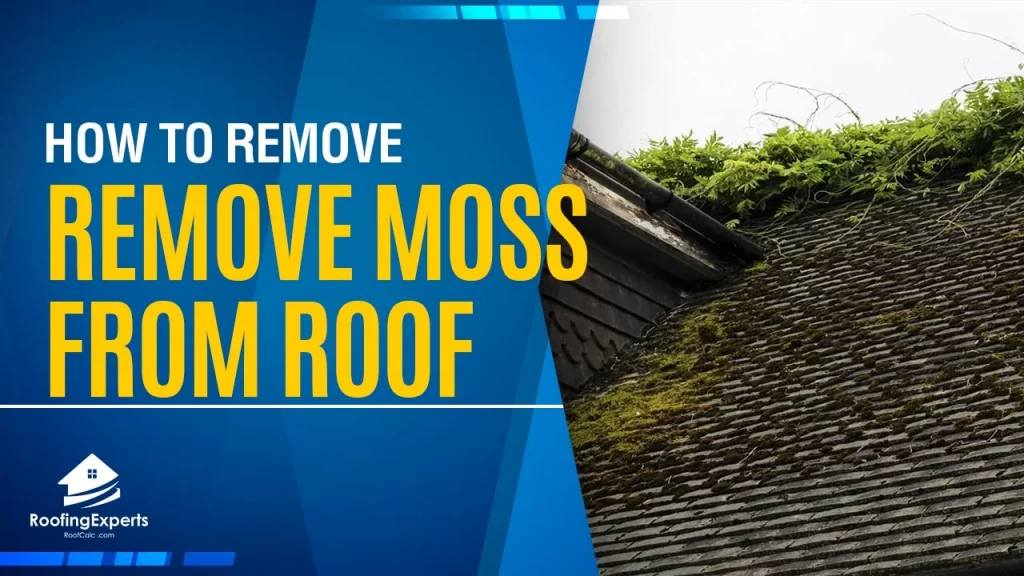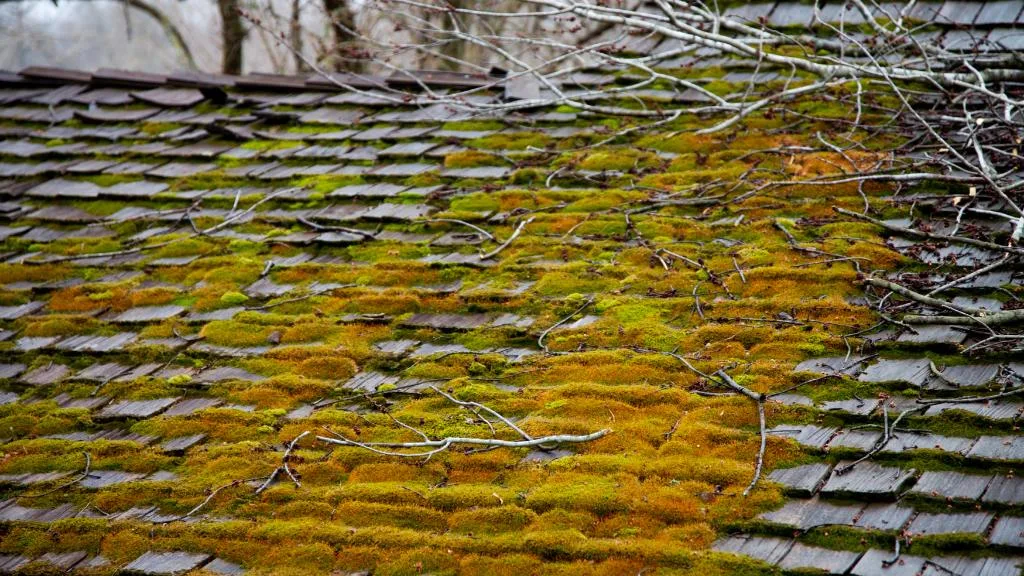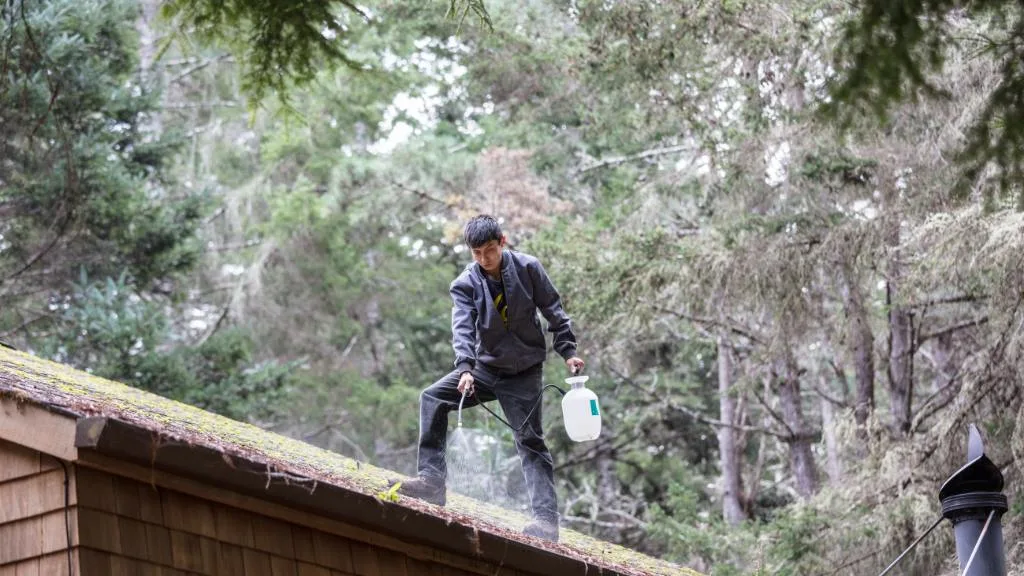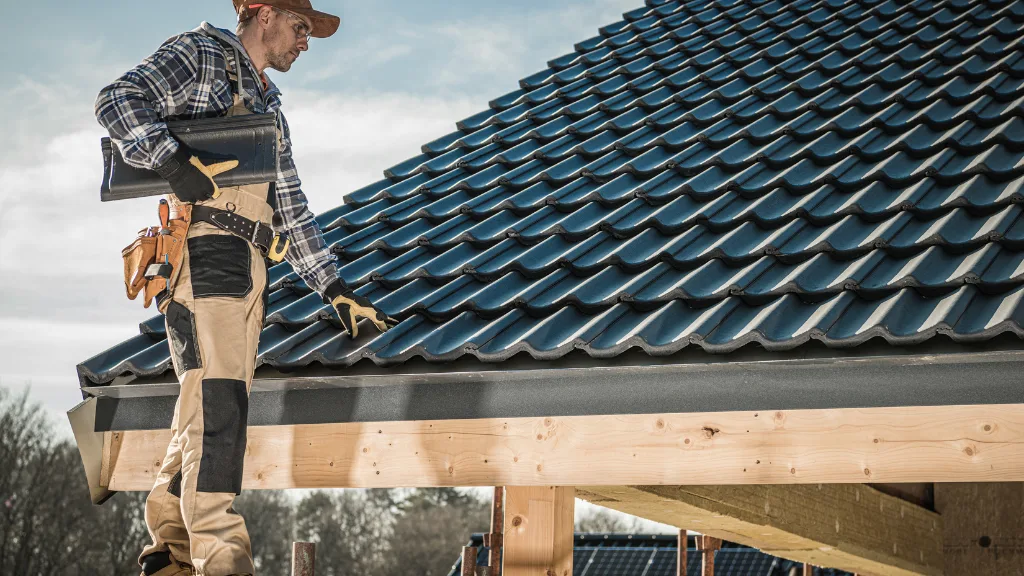
Moss is a pesky plant that can grow quickly and be difficult to remove. But never fear, we have the solution! This post will teach you how to get rid of moss on your roof without harming your home or property.
- What Causes Moss From Roof
- Precautionary Measures in Dealing with Moss from Your Roof
- Why is Moss Bad for Shingles?
- Frequency of Cleaning Your Roof Tiles
- Is it Safe to Add a New Roof Over Moss?
- Effective Ways to Restore a Roof from Moss
- When Moss is Not Really the Problem
- When to NOT Remove Moss
- Final Thoughts About Moss on Roofs
This article talks about removing moss from roofs in detail. It discusses the benefits of getting rid of it, provides tips for doing so, and then explains what you should do if there are any side effects from moss removal.
What Causes Moss From Roof
A moss-covered roof can be an attractive addition to your home. That is, until it begins to grow out of control and becomes unsightly.
If you’re wondering why moss grows on roofs in the first place, also known as roof moss or lichen, there are several reasons for this phenomenon.
Thatching Effects
Mosses and lichens thrive in damp environments.
If your roof is poorly thatched or neglected, moss will be more likely to grow on it than if you thatch your roof regularly and maintain it adequately.
Old Mortar
It’s possible for moss to get a foothold in the mortar between bricks of tile or stone. If this mortar is damaged and not fixed, moss will be able to grow in the crevices.
Shingles
Roof shingles allow moisture to seep into the roof itself under certain conditions. Moisture can then enter further into the roof’s structure, potentially resulting in moss growth.
Leaf Litter
If roof tiles are covered by a layer of debris, including leaves and twigs, mosses will have more opportunity to grow there.
Simply removing this litter is sometimes enough to eliminate the problem on its own.
Poor Drainage
A poorly drained roof will also enable moss to grow more easily.
If you notice that your roof is very wet or that there is pooling water in the gutters after a heavy rainfall, it’s an indication that something may be wrong with your drainage system.
Uneven Roof Tiles
If the tiles on your roof are uneven, moss will have more ability to grow in the cracks.
This is especially true of older roofs that were once flat but now display a few defects due to wear over time.
Leaks
A roof with leaks also provides an environment where moss can thrive.
If water permeates into your roof’s structure, it can do damage and provide a foothold for moss to grow.
Smoke Damage
Smoke from wood fires can cause your roof tiles to become discolored with soot, which is an environment where mosses and lichens will happily reside.
If you have smoke damage on your roof tiles, it’s time to re-thatch your roof.
Mould and Mildew
As a consequence of wet conditions, mould and mildew can also cause problems for your roof tiles.
If you notice that there is a blackish mold growing on your roof tiles, moss will be able to grow in those areas as well.

Precautionary Measures in Dealing with Moss from Your Roof
You can prevent moss from growing on your roof tiles. The following will help you do so:
1. Thatch and clean roofs regularly – Regular thatching and maintenance of your roof, including cleaning debris such as fallen leaves, will reduce the likelihood of moss growing on your tiles.
2. Be sure to fix any problems with the thatch or mortar – Maintaining your thatch properly is the simplest way to avoid moss growing on your roof.
If you have any problems with either of these, fix them promptly or hire a professional if you are unsure how to do so yourself.
3. Use a high-quality roofing paint – It’s possible to paint your tiles with a special roofing paint that prevents moss from growing on them.
This can be a good alternative to re-thatching your entire roof, especially if you’ve found problems with the thatch or mortar.
4. Enhance drainage – If you’ve previously had problems with poor drainage on your roof, take steps to correct the situation.
You can do this by adding gutters or checking that the tiles themselves are sloped toward the downspouts at a gentle angle.
5. Keep water off of your roof tiles – If you wish to keep water off your roof tiles, there are special roofing paints that protect against moisture damage.
You can also ensure that debris such as leaves and twigs is cleared away from the tiles regularly.
6. Remove leaf litter from your roof tiles – When you remove leaves and twigs from your roof tiles, this will keep them dry and reduce the chances that mosses will take hold. You can do this by raking or blowing away debris.
7. Keep roof tiles in good shape – Regular maintenance of your roof tiles is key in preventing problems with mosses.
Inspect them monthly to ensure that they are free from cracks, damaged areas, fractures and other problems.
8. At the first sign of moss – If moss starts growing on your roof tiles, act quickly to remove it. You can use a wire brush for this or rent an industrial steamer.
9. Fix standing water on your roof – Standing water will encourage moss to grow, so make sure that you don’t allow pooling of rainwater on your roof.
If this is an issue for you, it’s also a sign that something may be wrong with the drainage system.
10. Keep gutters clean – Debris like leaves and twigs in your gutters can contribute to moss formation and growth on your roof.
Clean out gutters regularly, especially during the fall and winter months, to prevent this problem from happening.
Why is Moss Bad for Shingles?
Moss is a type of plant that grows in damp, shady or wet areas. Moss thrives in moist conditions and often appears on roofs where the drip line is frequently soaked by rainwater during heavy storms.
Moss can also form on shingles that are constantly exposed to high humidity levels due to poor drainage or condensation from excessive tree cover.
Unlike moss, algae thrives in moist conditions but can also grow on a roof that is exposed to a lot of sunlight.
Over time, algae will eventually turn the shingles black and cause rot or decay to form at the base of your roof.
In order to protect your home from water damage caused by leaking roofs, one of the first things that you need to do is remove moss and algae from your roof.
Moss and algae can cause the following problems:
1) Damage to roofing shingles
2) Causes leaks
3) Increases the risk of ice dams forming during winter months
4) Increases the risk of moss falling off the roof and causing damage to your shrubs, siding or vehicles
5) Increases the risk of moss falling off the roof and making it slippery for individuals walking on your sidewalk
Frequency of Cleaning Your Roof Tiles
While you need to clean the tiles only once every few years, you should also carry out regular inspections so that you can check the tiles for damage and problems.
- If, after cleaning your roof tiles, you see moss starting to grow again within a few months’ time, this means that something is amiss with the way that the tiles are draining water.
- Be sure to fix any of these types of issues once you find them or hire someone who can so that you can prevent moss from forming on your roof.
- If you need to use pressure washers for this task, do so at the very beginning of spring or toward the end of summer when it is warmer outside.
- This will ensure that there is no chance that the water may freeze and damage your tiles.
- While it’s relatively difficult to get rid of moss from roof tiles, you can prevent it from forming by keeping the tiles clean.
As long as you do this regularly and follow the guidelines above, you should have no trouble preventing moss from growing on your roof.

Is it Safe to Add a New Roof Over Moss?
This is the question being asked by many people who are considering adding a new roof over mossy shingle roofs.
Most moss on roofs grow solely due to moisture accumulation.
- They are usually found in damp shady areas that retain moisture, such as around chimneys or skylights, on north slopes of roofs, and at the bases of roof valleys.
- This moisture can cause moss to grow in just a few years.
- Mosses don’t absorb much water, so when they are wetted by rain or dew, under certain conditions they will release this water back onto shingles below through the process called “transpiration.”
- Transpiration is not only unsightly, but it may eventually damage wood structures, roofing materials, and painted surfaces.
- When moss is removed from roofs, it can cause significant amounts of sediment to be released into the environment.
- The remaining dead moss needs to be disposed of properly by placing it in bags or totes that are then taken to a licensed disposal site.
- A single square foot of asphalt shingles contaminated with moss can contain up to an ounce of lichen.
- When moss is growing on asphalt shingles, it actually prevents problems before they occur by protecting the roof surface from direct sunlight that would otherwise heat up the asphalt and cause it to reduce its ability to reflect heat away from the building.
A new roof over an existing mossy roof will not be as efficient as it should be, and the possibility of heat build-up inside may cause mold or fungus problems.
Moss can also hold silt and dirt on roofs so that they do not wash away.
These factors all contribute to a green roof over an existing mossy roof being the wrong choice.
Effective Ways to Restore a Roof from Moss
The most effective way to restore a roof is to clean off all debris and remove the moss completely, but use proper safety precautions!
- Cleaning methods include power washing or sometimes pressure washing with chemicals such as bleach or sodium hydroxide (caustic soda).
- Power and pressure washers should never be used on wood shingles, as the pressure could drive water and wood fiber into the cracks and cause leaks.
- An organic non-selective herbicide should be used on concrete flat roofs.
- Organic products such as corn gluten meal help to reduce moss formation by preventing seeds from germinating.
- Corn gluten meal is available at most garden centers, but it can also be made at home by mixing dry cornmeal with water until a paste is formed.
- Products available from roofing supply dealers include moss control granules or shingle savers that can be applied with a fertilizer spreader.
- Moss control products prevent moss spores from germinating and growing on roofs.
The moss will eventually die.
Sometimes a roofing contractor may first coat a roof with a special chemical that inhibits the growth of moss, and then apply granules or shingle savers on top of the coating to keep new spores from growing.
Be sure to follow all directions for application as directed by the supplier.
When Moss is Not Really the Problem
Moss is usually not a problem with asphalt shingles as it helps to protect the roof from sun damage and heat build-up.
- Reflective granules that can now be applied by most manufacturers of asphalt shingles will help reduce moisture accumulation and prevent moss formation on roofs, especially when they are sanded to look like an older roof with only a few shingles missing.
- Weathered wood shakes can be treated by applying a clear penetrating water repellent to the surface of the shake.
Sometimes moss is growing on rough vertical surfaces because they are very dark in color, which absorbs more heat and causes the surface to heat up enough to damage the roofing material.
Also, if there is an overhang around the perimeter of a building that has shaded vertical surfaces, water will pool next to these areas and cause problems with moisture penetration at ground level.
Moss does not grow on wood shingles or shakes because they are made from non-organic material, so the appearance of moss in these cases is just a cosmetic issue.
When to NOT Remove Moss
Cleaning off an established green roof and completely replacing the asphalt shingles can be much more expensive than having a new roof installed, especially when you also add the cost of removing the debris from the site, so sometimes it may be better to leave the moss and just maintain it.
Clear, penetrating water repellents will not damage the shingles and granules already on a roof to enter the asphalt and cause leaks.
It may help reduce moss growth by keeping roofs dry so it is more likely that the reflective properties of the asphalt shingles will be preserved over time.
A roofing contractor can apply granules or shingle saver products on top of the existing roof with a fertilizer spreader.
This usually has the added benefit of also applying fertilizers to promote plant growth throughout the area, which may help reduce moss growth as well.
Moss does not grow in dry climates that are hotter and have less humidity, so you may be able to just clean off the moss and other debris from a roof every few months or once a year if needed.
Final Thoughts About Moss on Roofs
Moss is a common problem on roofs, but it isn’t an unavoidable one.
If you have the time and energy to spend cleaning off moss from your roof twice a year or once every few months depending on where you live, then there are products available that can help prevent new problems because they inhibit the growth of spores in different ways.


